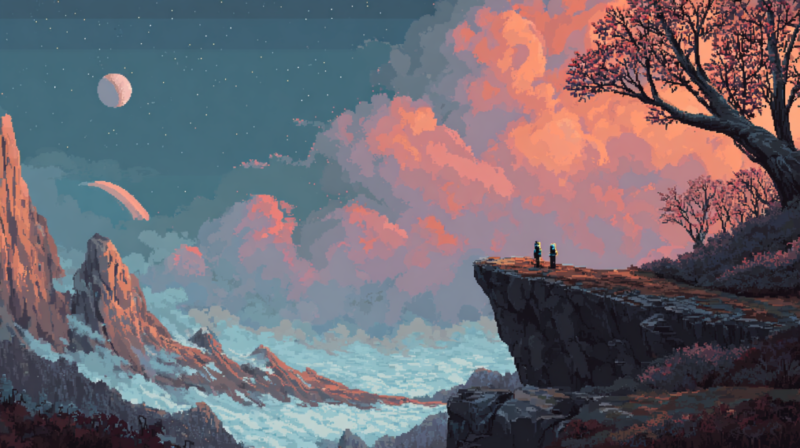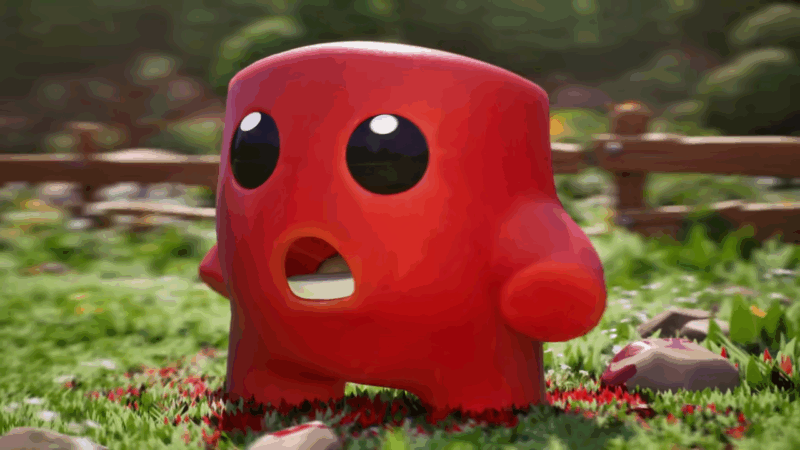Pixel graphics and chiptune audio have returned to the spotlight in indie game design. Their resurgence in the 2020s and into 2025 highlights more than a passing trend.
They serve as creative decisions embraced by developers who favor heart over horsepower.
Pixel graphics refer to the blocky, pixel-by-pixel visuals seen in early 8-bit and 16-bit titles, while retro sound points to the electronic beeps and loops once shaped by hardware limits.
Today, indie developers wield these tools by choice.
Nostalgia plays a key role in driving this wave. Generation X recalls arcades and cartridges. Millennials remember handheld classics.
Even Gen Z connects to retro styles through remakes and reboots. What results is a cultural and commercial revival touching every layer of modern indie development.
Nostalgia as a Driving Force
Games designed with pixel visuals and retro soundtracks tap directly into the emotional reservoir of players.
Nostalgia does more than echo the past; it anchors the player’s experience in something deeply familiar.
That buzz of a CRT monitor, the chime of an 8-bit tune, the tactile feel of a directional pad, all contribute to a powerful emotional imprint.
Players recall a time when games didn’t hold their hand, when every jump had weight, and every loss pushed them to try again.
Moments of simplicity become sanctuaries in a media environment overloaded with realism, photorealistic graphics, and overproduced soundscapes.
Nostalgia operates in cycles, especially in pop culture.
According to the 30-year rule, the media tends to revisit trends from three decades prior.
What shaped the childhood of the 1980s and 1990s now shapes creative direction in the 2020s and into 2025.
Game designers raised on consoles like the NES and SNES have become the creators steering the industry forward, not by abandoning the old, but by honoring it with intention.
Some might assume that retro visuals and sounds are used due to a lack of budget or resources. In reality, these choices reflect design clarity and artistic preference.
Indie developers make intentional use of older techniques not to replicate, but to reframe.
Pixel Art

Pixel art emerged during an era defined by hardware constraints.
Developers worked with limited resolutions, tight memory restrictions, and a narrow color palette.
What started as a limitation became an aesthetic.
Visual storytelling gains power through reduction. Pixel characters don’t rely on high detail to express emotion.
A single pixel change in an eye or a slight animation tweak can convey sadness, rage, or triumph. The medium thrives on suggestion, not simulation.
Developers now elevate pixel visuals using modern tools. High-resolution layering, parallax effects, and lighting systems breathe new dimension into classic forms.
HD-2D has emerged as one of the most compelling examples of this evolution, where old meets new in stunning detail.
Examples of modern enhancements include:
- Octopath Traveler: High-definition lighting combined with sprite-based visuals
- Eastward: Hand-crafted pixel backgrounds enriched with dynamic effects
- ANNO: Mutationem: Hybrid of 2D sprites in 3D environments for cinematic gameplay
New expressions of pixel art also include experiments in 3D pixel design, voxel animation, and physics-based sprite systems.
Another advantage of pixel art lies in accessibility.
Indie teams, often composed of fewer than five people, can create high-impact visual experiences without requiring massive rendering power or GPU optimization.
Budgets stay lean. Development cycles remain manageable.
Why pixel art remains favored by indie studios:
The Sound of Nostalgia
View this post on Instagram
Audio crafts memory in ways visuals often can’t. Just a few notes of a chiptune melody can transport players back decades.
The brain doesn’t need complexity to remember; it needs consistency and character.
Retro games understood this, and modern developers are reviving it with precision.
Retro sound design relies on synthetic tones, short loops, and melodic simplicity. The magic lies in its memorability. Game composers in the 1980s turned technical limits into musical identity.
Modern indie composers embrace those same techniques, not as constraints, but as creative frameworks.
Chiptunes are once again central to the experience.
The compositions are structured like their 8-bit predecessors but layered with complexity and nuance that the original hardware couldn’t produce.
Dynamic audio design also brings new life to vintage sounds. In many modern games, music responds in real-time to player actions.
The fusion of interactivity and retro style heightens immersion. Sound effects carry their weight.
Developers often reintroduce:
Retro Inspiration in Online Casino Games
Pixel graphics and retro audio have transcended the indie space and found a new home in online casino gaming.
What was once sleek and minimal now embraces bold colors, 8-bit textures, and vintage arcade flair.
Slot machines have seen a shift in presentation. Instead of relying entirely on high-resolution realism, many online titles lean into stylized pixel visuals.
Fruit symbols, sevens, and bars look like they’ve been pulled straight out of an 1980s arcade cabinet.
Paired with grid-based interfaces and vibrant animations, the result is both familiar and refreshing.
Visual trends making an impact:
Audio plays just as vital a role. Chiptunes and retro jingles are now common across casino reels, bonus rounds, and menu transitions.
Game developers recognize that sound can elevate engagement just as much as visuals.
In some of the games featured at casino.com, soundtracks often include melodic loops that resemble Game Boy-era compositions, complete with satisfying win chimes and error bleeps that emulate classic UI responses.
Classic Gameplay Mechanics Reimagined

Modern indie developers aren’t chasing cinematic spectacle; they’re chasing engagement.
Instead of extended cutscenes and layered tutorials, many games return to skill-based mechanics that prioritize control, reaction, and player agency.
Games once defined by tight hitboxes and unforgiving challenge now influence contemporary design.
“Nintendo-hard” is a badge of design honor in this case. Players are given the tools to succeed but must earn mastery through practice and experimentation.
Notable examples include:
- Super Meat Boy: Precision platforming with instant respawns and brutally fair levels
- Celeste: Momentum-based movement tied to emotional storytelling through gameplay
- Dead Cells: Rogue-like combat and exploration built on player reflex and decision-making
Classic genres are being revived, not just reused. Metroidvanias, turn-based RPGs, and top-down adventures appear frequently in the indie space.
Each genre receives modern enhancements: smoother controls, auto-mapping, modular difficulty settings, and non-linear narratives.
Examples of old forms with new twists:
- Mysplaced: Zelda-like top-down gameplay with surreal visuals and puzzle design
- Thimbleweed Park: Point-and-click adventure with updated UI and meta-humor woven into classic mechanics
- Darkest Dungeon: Turn-based RPG infused with psychological stress systems and permadeath
Players often seek games that trust them, games that don’t over-explain but reward persistence.
Instead of spoon-feeding, these titles present a challenge as an opportunity. Emotional payoff arrives not through scripted cinematics but through earned achievement.
Indie Success Stories
@challacade Breaking the #1 rule of pixel art #gamedev #programming #indiegames #gaming ♬ original sound – Challacade
Pixel graphics and retro audio have become the heartbeats of some of the most celebrated indie games.
Developers across the globe are proving that expressive design and emotional storytelling don’t require bleeding-edge visuals; they require:
Games like Shovel Knight, Stardew Valley, Undertale, and Cuphead serve as reference points for how classic aesthetics can fuel innovation.
Each project brings something different to the table while rooted in the ethos of earlier gaming generations.
What connects these titles is not just their love for the past but their ability to use retro tools to tell fresh stories.
They’re not replicas. They are reimagined experiences that know their influences but remain boldly original in execution.
In 2025, new indie games will continue this momentum.
A new generation of titles uses pixel visuals and chiptune scores not out of nostalgia alone, but to craft narratives that resonate.
The Bottom Line
Retro design thrives not because of limitations, but because of creative liberation.
Pixel graphics and chiptunes provide developers with stylistic tools that evoke emotion and inspire connection.
Nostalgia becomes a launchpad for invention, not a fallback. By honoring the past, creators can reshape the future of interactive art.
In pixels and beeps, stories continue to grow.
